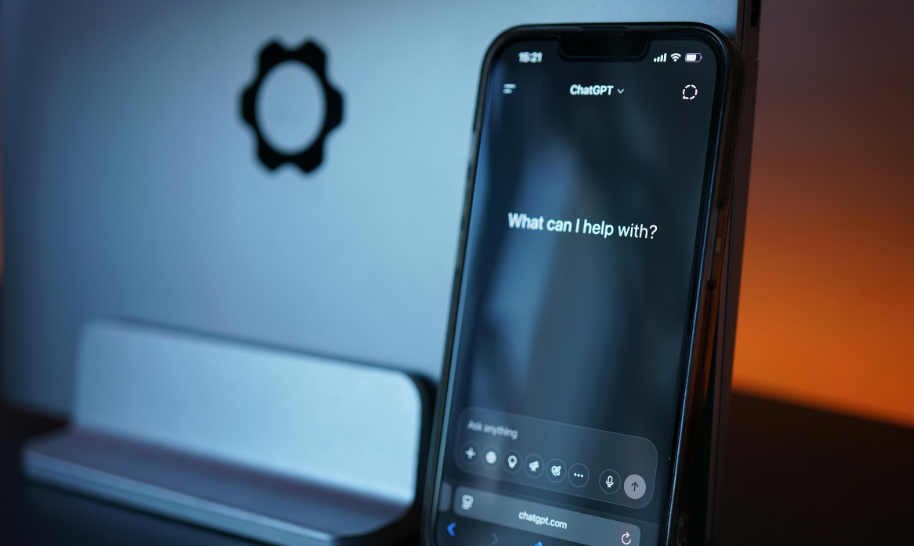Technology is a wave: either sail the boat or sink out. The enterprises focused on automating business procedures through enterprise software have exponentially multiplied their productivity and profitability.
Awesome!
Organizations understand the advancements of enterprise apps and are aware of empowering them to reap the rewards. Like every coin has two sides, every technology has two aspects - the good and bad.
The good part is that it increases productivity and gives a high return in the long run, and the bad is the adoption of feature-centric enterprise apps rather than user-centric ones.
User-centric enterprise apps emerge to simplify the routine complexity of the business. The objectives are to ease the standard process, save time, and fetch high returns. But the complicated or features-loaded enterprise solutions exploit employees, as they spend colossal time learning the weird ways to execute their work rather than focusing on accomplishing organizational objectives.
Business users no longer want to slog through many functionalities to complete simple activities. They anticipate that their daily programs will be as simple to use as essential smartphone apps, making the UX of enterprise applications more important than ever.
Good design gives you more visitors with higher chances of accomplishing your conversion goals. Tech-savvy companies considering the new and modern techniques for enterprise UX design will positively impact the user experience.
Factors responsible for creating excellent UX design for enterprise applications
Enterprise UX design requires thorough research, strategic planning, and dedicated hours of execution. A well-structured enterprise app can solve users' problems more efficiently than one built without professional assistance. It can provide you with a design advantage over your competitors and increase your chances of success. With an already large number of apps available on the app stores (iOS and Android), it becomes all the more important to build an enterprise app with stunning UX. Because there is a prominent belief that mobile apps with soothing usability and pleasing interface are likely to prosper more often than not.
-
Know the difference
It is good to know the difference between the UX of consumer apps and enterprise apps. In enterprises, users are their personnel, while in consumer apps, users are end-consumers.
Most businesses evade the friendliness of the interface and are engrossed in promoting the feature-rich product and concentrating on how well the features can perform.
Organizations work fluently to get things done on time. They train their employees to do their jobs effectively and efficiently, enabling the automated process for anything that creates a hindrance in the workflow that might result in unproductivity.
Consumer apps are developed and designed for the end-users. In fact, they are tested by the end-users. The people who'd be using the app experience it beforehand. Afterward, the process of integration to resume the workflow takes place after confirming that it meets all the requirements.
Today, companies accept that better enterprise UX design enables their employees to work accurately. While enterprise apps are a different story, there is more complexity and challenges in the UX design of enterprise products. To create an excellent enterprise UX design, designers need to think through the fundamental needs like enterprise applications and turn them into a well-looking and convenient product.
-
Discover the requirements
Conducting interviews with users positioned across departments is the best way to discover the root cause of the nerve-racking user experience. Designers learn the people's experiences through empathetic discussions; conducting end-to-end queries will help get to the heart of what users need, what features they are looking for, and what to eliminate to untangle the complexities related to enterprise UX design.
-
Frequently connect with users
Time investments in discovering needs will give you valuable feedback, but connecting with users will often land you in creating a functional design. You can ask infrequent questions about diverse functionalities, business goals, previous user experience, etc.
You can also explain how UX design creation or modification will meet their current business needs.
Users are happy to help make the right product from the beginning because their routine work depends on it. They know what problems will resolve and how they can operate the tool. Helping you often at every stage of the development procedure in designing UX is like helping themselves.
-
Simple is beautiful
One of the typical reasons a corporate client creates an enterprise app is to simplify complex procedures for its employees. This means that the design team must have a thorough understanding of existing routine jobs, from simple to laborious duties. Simple design leads users to easy navigation and quick adoption of applications.
It's not only about the designers who play a vital role in turning stones, but the whole product development team should have an exhaustive understanding of the company's workflow.
Must Read- Step-by-Step Guide to Hire Web Development Agency
Involve members of the entire team to discuss how to simplify and improve performance. Screen content and functionality and how the information is presented, compatibility with current IT infrastructure, access to all departments, and responsiveness at the same time, are all factors to consider.
The team should clear the doubts about complex problems from users and, in return, propose new ideas. If you cannot solve it, start redrafting the issues, integrating the solutions, and seeing if the software isn't making the user's task more straightforward.
-
Cross-platform design
Responsive design empowers the consistency of work across different departments on multiple devices simultaneously. Users operate multiple devices to optimize their time and work. So, it becomes evident for designers to streamline the design to coincide with the specifications of various devices.
Also, the team should acknowledge what operational channels are being used and how the app will fit into the cross-platform workflow. Cross-development app development tools with a single codebase can create responsive designs and ensure that applications offer consistency and uniformity.
-
Don't emphasize feature-centric products
Don't impress organizations by jamming features into the app and affirming that this approach will help achieve goals. Overly feature-rich products can be their worst enemies.
Naturally, the more capabilities a SaaS tool has, the more cluttered its user interface will be, making it more difficult for users to use any available features without becoming confused or overwhelmed.
-
SaaS branding
Designers can brand the design system with the organization's logo, standard color palette, tagline, etc. Top management labels the enterprise UX design interface with organization identification because it delivers a remarkable and recognizable user experience to employees. And when you bestow exceptional experiences on users, the company will gain employees' trust, familiarity, and long-term credibility.
Branding an enterprise app is like delivering equality and promises with its cross-functional team. Of course, it must be visually appealing in a minimalist manner that does not detract from the user interface's utility, but improving usability frequently enhances the visual design.
-
The user interfaces as per the functionalities
Boosting the UI for different user roles is another technique to simplify tools. Why should you display users features they are unlikely to use? A cleaner user interface is one that people can operate more efficiently; it makes it easier for them to discover what they need, allowing them to work faster and more effectively.
Everyone's primary goal is to get work done — even managers will agree on this — hence one of the first phases in the user onboarding flow for enterprise teams with diverse user personnel should be for users to declare their job within the organization. This is one of the most effective methods for reducing user-level feature bloat.
-
Personalization
People have got their wires crossed if the application is bombarded with functionalities. Custom enterprise apps always cater to the specific needs of an organization's workflow. Personalized experiences help highlight individuality.
Designers should acknowledge the possible needs based on the organizational hierarchy. Even when the lower-level management, their significance to the organization's success rather than just filling a role, emerges as the most impressive and rewarding user experience of the product, resulting in users doing their best work.
You can integrate basic information, job description, designation, and responsibilities. If the employees know each other before communicating about name and title, they feel like they contribute their valuable expertise.
-
IT Infrastructure
The design of an enterprise app must be drafted based on its current IT infrastructure. In some ways, this is advantageous because you get an idea about Information Architecture, which further helps organize, strategize software content, and label them accordingly.
During the corporate UX design phase, the designer and developer must work closely with the IT or technology department to determine what can and cannot be accessible. App requirements and designs can adequately reflect the results if the limits are known early on, saving time and money.
-
Introduce new technologies
Enterprises are upgrading faster and better with the technologies. Introducing modern technologies in design gives an advanced user experience and keeps them competitive.
Many organizations shifted to permanent work from home because of the flexible working hours. To give an office-like experience, you can introduce a 'whiteboard,' an interactive tool that facilitates creativity and brainstorming.
People face more issues while learning 'how to do jobs on enterprise apps. We can't expect to understand SaaS tools in a blink of an eye. Designers should always build searchable and understandable help or FAQs related to every function already integrated into the SaaS tool.
Navigation to the helpdesk area should be straightforward so that users know where to locate it and find to resolve their queries without interfering with the productivity of others.
Incorporating chatbots in products can improve cross-connectivity between departments, and newer technological options like helpdesks, chatbots, and whiteboards into your interface design make life easier for your users, organization, and customer support personnel.
-
Lean UX and MVP testing with real users
When the execution of user-centered-design methodologies in developing and designing the UX of an enterprise app is complete, it's time to adapt "guerilla testing" or "Lean UX or MVP" of corporate software with actual employees who will use the app before implementing it in their workflow.
Their review of the wrong, good, or unwanted features will help you in the required modifications to build another prototype for phase 2 testing. Continue doing so until you get the final successful product. Most likely, the original attempt omitted a step or oversimplified the process.
-
Easy adoption
Enterprise app adoption is a bit different than consumer app adoption. Companies introduce such solutions to resolve the issues and ensure that every user adopts the technology in their work routine and uses its app as much as possible. The designer's team must make sure the quick adoption of new user-centric technology in users brings value and potential to their workflow. Technology experts should demonstrate and articulate the importance of enterprise applications and their design to users.
Final Thoughts
Looking at the rapid pace technology evolves in the business world, many businesses adopt new technologies. Adopting the enterprise SaaS product in the existing business procedure will impact a significant external ROI. Although often mistaken by organizations that feature-centric products will improve their productivity, the best way to gain a competitive advantage in the modern economy is through the ever-improving UX design of enterprise SaaS products.
The future of enterprise UX can iterate and improve business processes to provide outstanding solutions that impact organizations. Consumer-facing applications deserve the usability, user-friendliness, and updated UI of business and enterprise software.
Start the Conversation
We collaborate with companies worldwide to design custom IT solutions, offer cutting-edge technical consultation, and seamlessly integrate business-changing systems.
Get in TouchUnlock the power of AI and Automation for your business with our no-cost workshop.
Join our team of experts to explore the transformative potential of intelligent automation. From understanding the latest trends to designing tailored solutions, our workshop provides personalized consultations, empowering you to drive growth and efficiency.
Go to Workshop DetailsExplore Our Latest Articles
Stay abreast of what’s trending in the world of technology with our well-researched and curated articles
View More InsightsCost Breakdown to Build a Custom Logistics Software: Complete Guide
Global logistics is transforming faster than ever. Real-time visibility, automation, and AI...
Logistics Software Development Guide: Types, Features, Industry Solutions & Benefits
The logistics and transportation industry is evolving faster than ever. It’s no longer...
From Hurdle to Success: Conquering the Top 5 Cloud Adoption Challenges
Cloud adoption continues to accelerate across enterprises, yet significant barriers persist....
Gen AI for HR: Scaling Impact and Redefining the Workplace
The human resources landscape stands at a critical inflection point. Generative AI in HR has...




